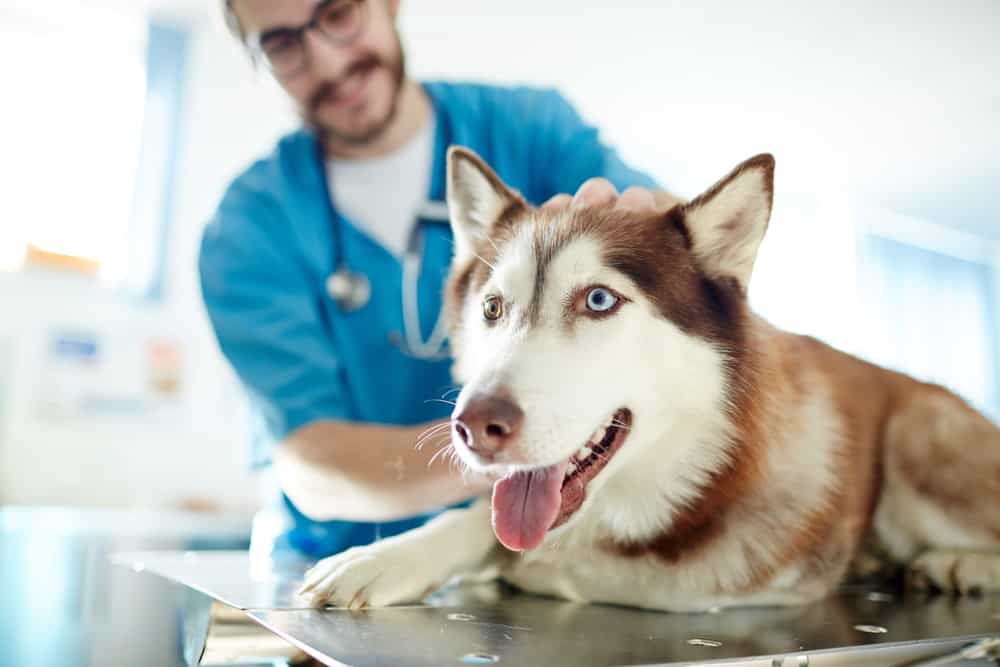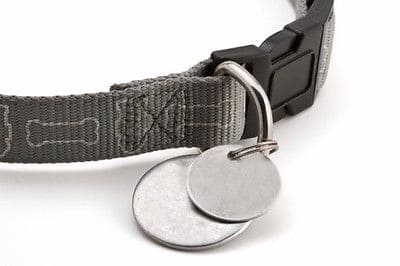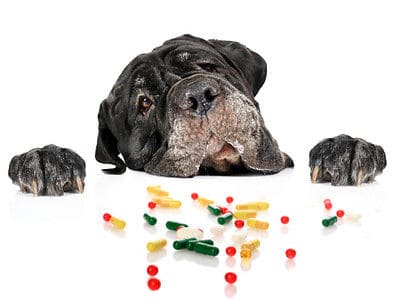“This post contains affiliate links, and I will be compensated if you make a purchase after clicking on my links.”
Throughout our own lives, we learn the basics of human health and wellness – maintain a healthy weight, brush our teeth, wash our hands, etc. But, did you know there are basics of dog health and wellness, too?
If your veterinarian could give you 10 bits of advice for helping your dog live the longest, healthiest life possible, here’s what they’d say:

1. Annual wellness exams are really important!
Many pet parents are guilty of only visiting the veterinarian when there’s an obvious problem with their dog. Veterinarians can all agree, regular wellness exams, typically once a year, are one of the most important ways to keep pets in good health. Many of the health issues dogs face as they grow can be caught – and treated – early, even before symptoms develop. With a simple annual wellness exam, in addition to administering any necessary vaccines, your veterinarian can screen for potential problems like heart disease, diabetes, joint issues, obesity, and oral health and suggest lifestyle changes to prevent or reverse any issues from developing.
2. Yes, you should spay or neuter your dog.
With between 8 and 10 million pets entering shelters every year, the decision to spay or neuter may seem like a no-brainer to some. In addition to reducing the number or unwanted pets, spaying and neutering reduces the likelihood that a dog will escape or roam. While the jury is still out on whether spaying and neutering is the best choice from a strictly health perspective, the procedure has been proven to lower or eliminate the risk of certain cancers. Although the surgery can be performed as early as 6-8 weeks in puppies, it is now commonly recommended that dog owners hold off until their dog is a bit older as the presence of hormones during bone growth and development is beneficial. Talk to your veterinarian about the right time to alter your unique dog.
3. Flea prevention is essential.
Fleas are undoubtedly one of the most common issues pet owners must deal with. In addition to irritating, itchy bites, fleas can lead to hot spots, hair loss, anemia, and other painful skin conditions. And, even a single flea can infect a dog with tapeworms. Luckily, they’re easy to control with a multi-faceted approach. Whether you choose a natural flea preventative or one that contains pesticides, you’ll need to treat not only your dog, but your indoor and outdoor environments as well.

4. Don’t let your dog pack on the pounds.
It has been estimated that more than 50% of all dogs in the US are overweight or obese. Obesity in dogs is a leading cause of serious health issues including diabetes, arthritis, heart disease, and even certain cancers, among others. The number one cause of obesity is overfeeding. The good news is that obesity is totally preventable!
When feeding your dog, pay close attention to suggested feeding amounts. You should feed your dog according to his ideal weight, not his actual weight. Always use a measuring scoop to make sure she’s getting the proper amount of food. And, don’t forget, treats can add LOTS of calories to your dog’s daily diet. Make sure to adjust her dinner to account for extra calories.
5. Make sure your dog gets regular exercise.
Although the amount and type of exercise required varies greatly between dog breeds, ages, sizes, and overall health, all dogs should have a minimum of between 30 minutes and 2 hours of physical activity every single day. Many pet parents mistakenly believe that allowing a dog to run around a fenced-in backyard is sufficient for daily exercise needs. It is not. Rather, dogs should be provided daily with controlled, fast-paced activity that gets their heart rate going. A brisk 30-minute walk, swimming, playing fetch or Frisbee, or participating in one of many dog sports, like agility, dock diving, or lure coursing, are all great ways to help your dog achieve the cardiovascular and calorie-burning benefits of exercise.
6. Mental exercise is just as important as physical!
Mental exercise and enrichment is just as important to a dog’s well-being as physical exercise. In addition to preventing boredom and resulting destructive behavior, mental exercise improves a dog’s intelligence and problem solving skills, builds confidence, and, in some cases, offers a great opportunity to bond.
Mental exercise can be provided in a variety of ways. Training your dog is an excellent way to provide mental exercise! If your dog is already well versed in obedience skills like sit, stay, and down, pick up a book on trick training and keep working! Mental exercise can also be provided through treat dispensing puzzle games, scent detection games, and any task that requires focus and attention.

7. In addition to a collar and ID tag, your dog should be microchipped.
Although millions of dogs are lost or stolen every year, only around 10-14% of those that go missing are ever returned to their homes and families. One of the very first things new dog owners purchase for their four-legged family member is a collar and ID tag. While this is a great start and can often assist in a dog returning home quickly, collars can easily become lost or removed, leaving a dog unidentifiable.
Microchipping your dog is the single most effective way to ensure a lost dog is returned home. A microchip, about the size of a grain of rice, is inserted under the skin, usually between the shoulder blades. The entire process takes mere seconds to perform but can offer a lifetime of protection. Just remember, simply microchipping your dog is not enough. You must also register the chip and keep it updated with current contact information.
8. Don’t ignore your dog’s teeth and gums.
Despite veterinary recommendations that dogs have their teeth brushed every single day, most dogs will go their entire lives having never had their teeth brushed at home. That’s why dental disease, much like obesity, is one of the most common preventable illnesses in dogs. In addition to painful cavities, gum disease, and bad breath, poor oral health can lead to dangerous kidney and liver infections, heart disease, and cognitive dysfunction. Luckily, with a little time and effort, it’s easy to start a daily brushing routine with your dog. In addition to brushing, dental care can be provided in the form of dental chews and treats, oral rinses, regular veterinary dental cleanings.

9. Don’t give your own medications to your dog.
For a human, a little headache, an allergy flare, a runny nose, or a sore back can easily be treated with over-the-counter medications available at your local pharmacy. Unfortunately for a dog it’s not that simple. In fact, many over-the-counter medications we use can be dangerous, even lethal, for dogs. Human medications have been named one of the top ten most common pet poisons, very often leading to serious injury or death. Under no circumstances should human medications be administered to dogs without the express direction from a licensed veterinarian.
Common OTC medications like ibuprofen and acetaminophen, as well as decongestants, cold, and allergy medications pose serious health risks to our four-legged companions. In addition to not administering these drugs, they should be stored in pet-proof containers, well out of reach of curious pets.
Introducing Chewy Pharmacy – The One Stop Shop for Your Pet’s Medications!
10. Keep dogs properly protected during travel.
Emergency veterinarians treat tens of thousands of vehicle related injuries to dogs each year. Accidents happen to even the safest, most cautious drivers. A properly restrained pet has the greatest chance of surviving an auto accident. But, the chance of an auto accident isn’t the only reason to secure your dog in the car. Stopping short or slamming your brakes can easily send an unrestrained pup flying forward. Or, a dog that is allowed to roam freely can be a distraction, putting both driver and dog at risk for injury.
It is recommended that small dogs be placed within a crate or kennel that is secured with a seatbelt. And, larger dogs should be outfitted with a properly fitted, crash-tested vehicle harness and secured with a seatbelt. Additionally, dogs that are allowed to hang their heads out of the window should be fitted with goggles to prevent debris related eye injuries.
Keep these 10 things your veterinarian wants you to know in mind when caring for your pup to offer him the greatest chance at a long, healthy, vibrant life!
Found this article helpful? Pin it!



















